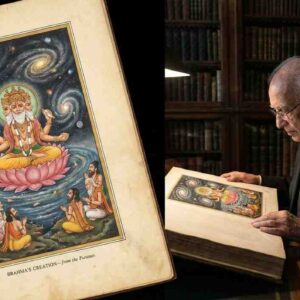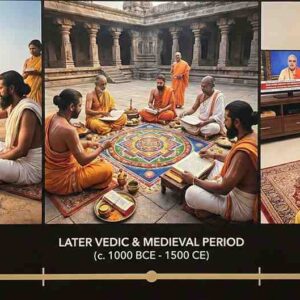Are Hindu Rites Becoming Symbolic, or Do They Still Hold Meaning in Modern India?
Rituals of transition, orsamskaras, are an integral part of Hinduism, marking key milestones in an individual’s journey through life. From birth to marriage and death, these ceremonies are imbued with profound spiritual, cultural, and social significance. However, as modern lifestyles reshape traditions, questions arise: are these rituals losing their essence, or do they continue to offer meaning in today’s world?
The Philosophy Behind Hindu Rites of Passage
The concept ofsamskarasoriginates from Hindu scriptures such as the Dharmashastras and Grihya Sutras, which outline 16 primary rites aimed at refining the individual’s soul and fostering spiritual growth. These ceremonies symbolize the transition between different stages of life, aligning personal milestones with universal principles ofdharma(duty),artha(prosperity),kama(desires), andmoksha(liberation).
- Namakarana (Naming Ceremony): Conducted within days of a child’s birth, this ritual signifies the acknowledgment of the individual’s identity.
- Vivaha (Marriage): Considered a sacred bond, marriage rituals emphasize unity, mutual respect, and the fulfillment of societal duties.
- Antyeshti (Last Rites): The final rite, performed to liberate the soul from the cycle of birth and death, reflects Hindu beliefs in reincarnation and liberation.
These rituals are not mere formalities but opportunities for introspection, gratitude, and alignment with spiritual values.
Challenges in Modern Practice
In contemporary India,samskarasface numerous challenges. Urbanization, nuclear families, and the fast pace of life have led to the simplification or omission of traditional ceremonies. A 2023 report by the Ministry of Culture revealed that52% of urban householdsperform only a fraction of the traditionalsamskaras, citing time constraints and a lack of knowledge about rituals.
Moreover, the rising costs of elaborate ceremonies have prompted criticism that these rites are increasingly commercialized, accessible only to the affluent. Weddings, in particular, have come under scrutiny for prioritizing grandeur over spirituality, with the average Indian wedding expenditure surpassing ₹25 lakh, according to a 2024 report by KPMG India.
Government and Community Efforts to Preserve Tradition
Recognizing the need to preserve these cultural practices, the government and community organizations have launched several initiatives:
- Digital Samskaras: The Ministry of Culture, in partnership with digital platforms, has introduced online guides and virtual priest services to make rituals accessible to urban families.
- Simplified Rites: Temples and spiritual organizations are promoting simplified versions of ceremonies, retaining their essence while accommodating modern lifestyles. For instance, the Tirumala Tirupati Devasthanams now offer budget-friendly marriage packages that emphasize traditional values over opulence.
- Educational Campaigns: The National Mission on Cultural Heritage has begun conducting workshops in schools and colleges to educate younger generations about the significance of samskaras.
A Path Forward: Balancing Tradition and Modernity
The relevance of Hindu rites of passage lies in their adaptability. While the essence of these rituals remains timeless, their forms must evolve to suit contemporary contexts. Practices like incorporating sustainable elements in weddings and embracing digital tools for rituals demonstrate how traditions can thrive in a changing world.
Conclusion
Rituals of transition in Hinduism are more than symbolic—they are profound expressions of life’s meaning and purpose. While challenges to their practice exist, efforts to simplify and adapt these ceremonies ensure their continued relevance. By honoring these rites not as obligations but as opportunities for reflection and connection, India can bridge its rich spiritual heritage with the realities of modern life, celebrating milestones in ways that are both meaningful and accessible.












